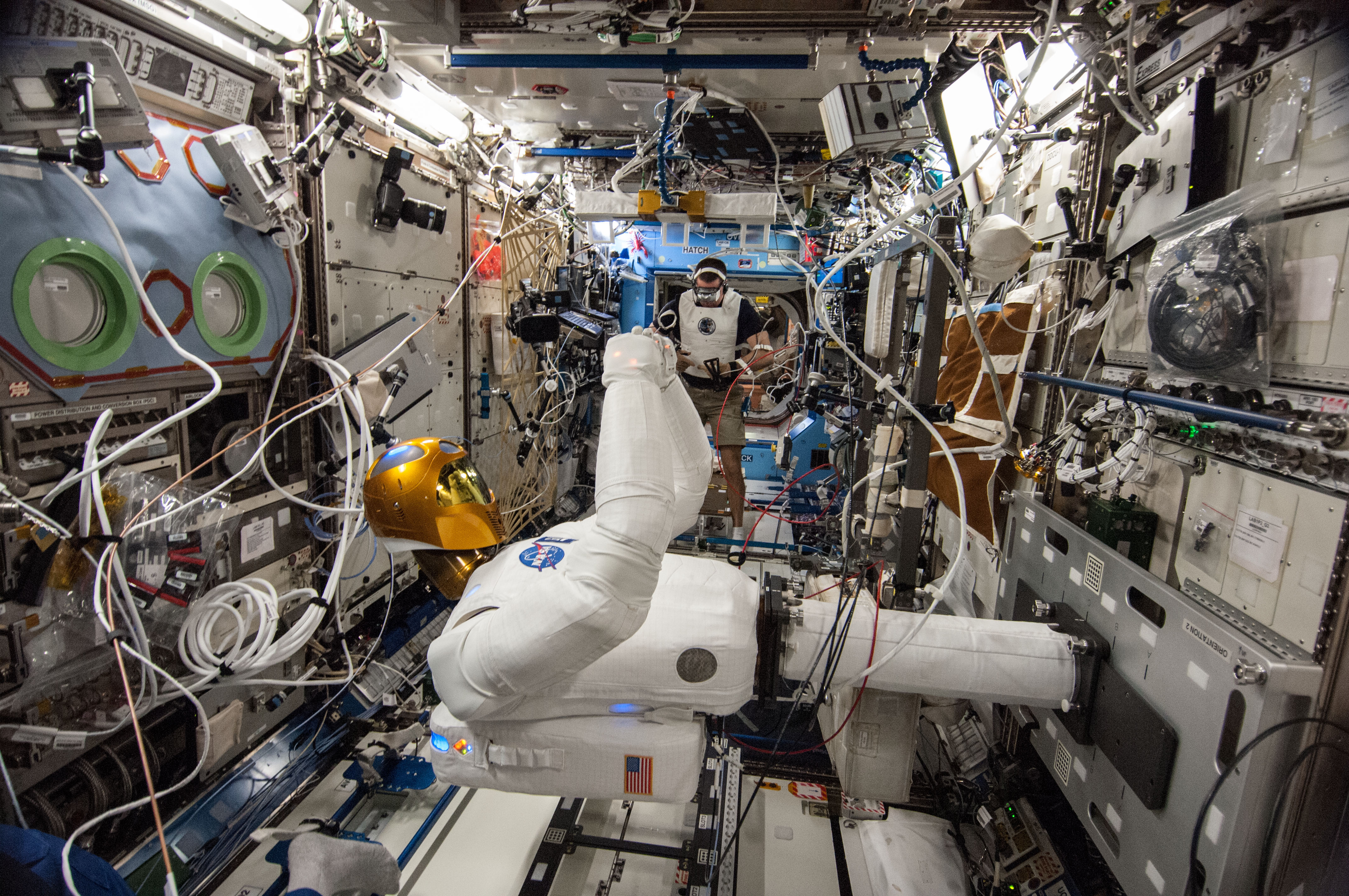In the last blog I wrote about the wide range of scientific research currently being done on the International Space Station, but the engineers are having plenty of fun up there too. Some of the technologies being tested sound a lot like science fiction, or at least what passed for SF just a few years ago.
MIT and NASA are testing some bowling ball-size droids that look and act a lot like the “remotes” Luke Skywalker used to practice his light saber skills. (Officially, of course, these are called SPHERES, as in Synchronized Position Hold Engage and Reorient Experimental Satellite. Seriously?) NASA insists they’re designed to test automated rendezvous and formation flying in zero-gravity. But putting them through their paces looks way too cool to be research.
 Espresso coffee got plenty of press and TV coverage earlier this year when the first-ever espresso coffee maker made for use in space was delivered to the International Space Station. Built by an Italian engineering company, and officially called “Isspresso”, it was popularly described as a sort-of Keurig cup-like machine. But its design is much more complicated than that, since it had to account for the unique behavior of fluids in weightlessness, which are very different from those on Earth. A nice first step toward the USS Enterprise food replicator.
Espresso coffee got plenty of press and TV coverage earlier this year when the first-ever espresso coffee maker made for use in space was delivered to the International Space Station. Built by an Italian engineering company, and officially called “Isspresso”, it was popularly described as a sort-of Keurig cup-like machine. But its design is much more complicated than that, since it had to account for the unique behavior of fluids in weightlessness, which are very different from those on Earth. A nice first step toward the USS Enterprise food replicator.
 NASA and the Made In Space Company developed an ISS-based 3D printer specifically designed and delivered for use on the ISS. A practical demonstration occurred in December of last year when a digital design file for a ratchet wrench was transmitted from the ground to the Space Station and the wrench was successfully printed on board. This is only a first step, but a very important one, in transforming the way scientific and technology research can be done in space, and supplying tools and other necessities to the ISS or other spacecraft on distant exploration missions. Can the transporter be far behind?
NASA and the Made In Space Company developed an ISS-based 3D printer specifically designed and delivered for use on the ISS. A practical demonstration occurred in December of last year when a digital design file for a ratchet wrench was transmitted from the ground to the Space Station and the wrench was successfully printed on board. This is only a first step, but a very important one, in transforming the way scientific and technology research can be done in space, and supplying tools and other necessities to the ISS or other spacecraft on distant exploration missions. Can the transporter be far behind?
 General Motors and NASA have developed a C3PO type robot, called Robonaut, that’s designed to support human crew member operations in space. It upper torso and arms were delivered to the International Space Station in 2011 and it has since acquired a set of legs that allows it to move about the ISS interior spaces. It will eventually be able to work outside the Space Station performing tasks that are too difficult or hazardous for a human astronaut.
General Motors and NASA have developed a C3PO type robot, called Robonaut, that’s designed to support human crew member operations in space. It upper torso and arms were delivered to the International Space Station in 2011 and it has since acquired a set of legs that allows it to move about the ISS interior spaces. It will eventually be able to work outside the Space Station performing tasks that are too difficult or hazardous for a human astronaut.
NASA describes Robonaut as a “two-armed humanoid robot torso designed with the versatility and dexterity to manipulate hardware, work in high risk environments, and respond safely to unexpected obstacles.” In keeping with my SF theme, the logical progression is from Robonaut to C3PO to Mr. Data.
For those of you, like me, who can’t get enough of this stuff, here’s a complete list of the technology experiments being done onboard the ISS. Have fun!
Copyright 2015 Dandelion Beach LLC Images: NASA












1 Comment